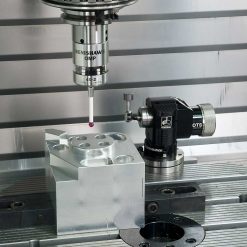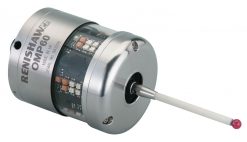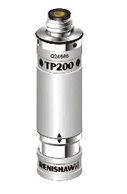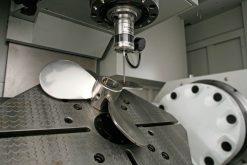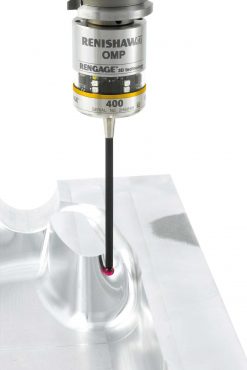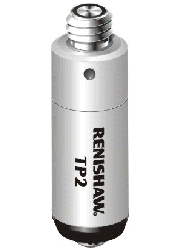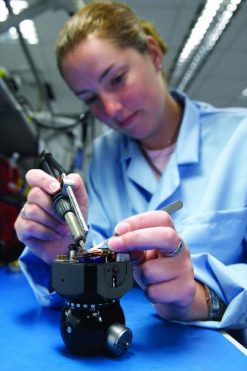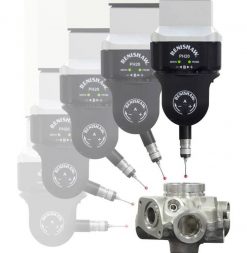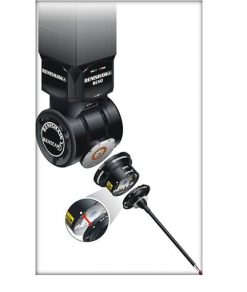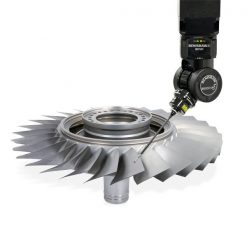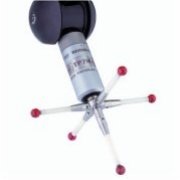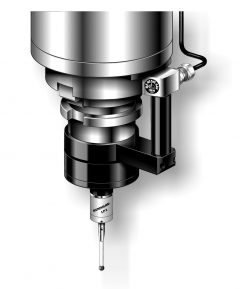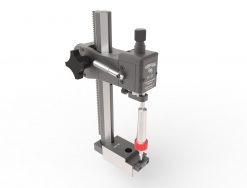Due to their “non-contact probing, optical sensors are very well suited for high-precision 2D and 3D measurements of micro-features. A large number of measurement points can be captured very quickly and easily. The application-specific resolution can be adjusted very easily by selecting an appropriate magnification. Due to their short measurement times, optical sensors are used in manufacturing inspection for a wide range of work pieces. Typical areas of use include punched and formed parts, micro-gears, precision optical components, electronic components, dental implants, cutting edge rounding on tools, and valve seats in the automotive field.
With surface topography sensors, such as the Werth 3D-Patch or the Werth NFP Nano Focus Probe, the quality of a work piece can be assessed very quickly in conjunction with 3D CAD data (see illustration). If the area to be measured is greater than the field of vision of the sensor, then several measurement point clouds can be arrayed and processed into a single overall surface. However, since each sensor can be positioned anywhere in the measurement volume using the work piece coordinate system, parts do not need to be completely digitized. Instead multiple areas of interest can be measured individually. This methodology saves measurement time and provides previously unachievable precision due to the integration of the sensor in a coordinate measuring machine. The use of less precise stitching methods, which work only with suitable object structures, is not necessary.
For diffusely reflective surfaces and mirror-finish work pieces, Werth Messtechnik provides with the focus-variation method Werth 3D-Patch, and the confocal sensor Nano Focus Probe (NFP), the perfect 3D sensors for probing uncertainties of less than 0.1 µm.







